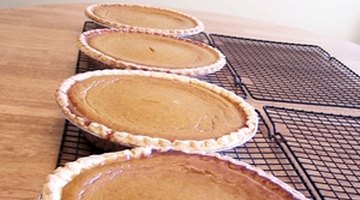How to Restore an Antique Pie Safe
Pie safes were introduced to America by the Germans. They were free-standing kitchen cabinets made of pine or other soft wood, with shelves inside to hold pies and other baked goods. Screens or punched tin allowed for ventilation while keeping out flies and other pests.There has been a long-standing argument in the antiques community about how much value is lost when an original finish is removed from an old piece of furniture. Most of the antique furniture in use today is not museum-grade, and could benefit greatly from a well-executed restoration process.

-
Clean and inspect the pie safe. Remove old screening or punched tin, if necessary. Remove the doors and drawers and remove the old hardware.
-
Sand the cabinet, drawers and doors thoroughly, using a heavy-grit sandpaper, and working up to a fine grit. Remove as much old paint as you can with the sandpaper.
-
Apply a commercial paint stripper to those difficult areas. Protect the floor by placing newspapers under the legs of the safe and under the drawers and doors. Leave the product on as long as the manufacturer recommends. Remove the softened layers of paint with a putty knife.
-
Inspect the dovetail joints on the drawers for signs of rot or damage. Repair the joints using wood glue, not nails. Hold in place with a clamp until the glue sets.
-
Replace the old drawer guides with new ones to allow for smoother movement of the drawers. Screw the guides into place.
-
Fill all gouges and cracks with wood putty. Sand the entire cabinet once more with fine-grit sandpaper.
-
Apply new stain or paint with a soft cloth or brush. Add a top coat of varnish or sealer for extra protection against moisture. Add new hardware to the drawers and doors, if desired. Replace the screening or punched tin, if desired.
Check out this related video from Homesteady on Youtube.
Tips
- Always have proper ventilation along with eye and hand protective gear when using heavy-duty strippers.
Writer Bio
Becky Lower began writing professionally in 2004. Her work has appeared in "elan" magazine, a northern Virginia publication, "Good Old Days" magazine, the "BGSU Alumni" magazine and on the website thenovelette.com. Lower has a Bachelor of Arts in journalism and English from Bowling Green State University.
Photo Credits
- four pumpkin pies image by Katrina Miller from Fotolia.com
More Articles



